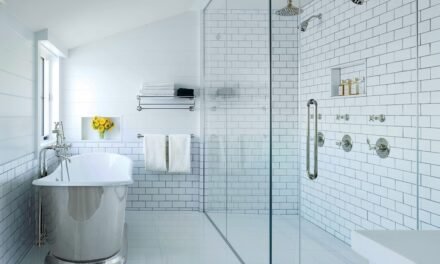A garden fence protects you from intrusions and prying eyes, while delimiting your land. But it is also a decorative element, which allows you to emphasize it. It is therefore important to choose this fence and the gate that accompanies it with care. To do this, you must play with shapes, colors and materials.
The choice of aluminum or PVC:
Before making your choice, it is important to respect the rules for the implementation of fences. In some cases, a prior declaration of work will be necessary.
Once this precaution has been taken, you can opt for an aluminum fence, which is long-lasting and easy to maintain. But, with its pure lines, this material also gives all its elegance to the fence and the gate. It brings with it an air of modernity, which gives the garden a special cachet.
Moreover, aluminum fences, gates and garden doors are available in several colors. The contemporary look of charcoal gray is very popular. But the fence can be covered with a green coating, to better blend into its environment. A white marble shade or alternating colors are also possible.
Some fences are made of aluminum posts and composite slats, a mixture of natural fibers and resin. They also have their charm.
PVC fences, on the other hand, are just as attractive. And you can customize them by varying the size of the posts and slats or the shape of the caps that top the pillars.
Read also:
5 ideas and tips for landscaping your garden
Wooden fences: an authentic look:
The choice of wood for fences and gates is based on its natural appearance, which blends effortlessly into the rural environment of your garden. Wooden fences come in many forms.
It can be composed of solid wood panels, with sloping blades, which, in addition to their aesthetic appeal, preserve your privacy. On the other hand, openwork and woven panels blend into the rustic atmosphere of the garden, while providing a certain lightness. Not to mention their role as a windbreak.
Why not install a traditional wooden fence? It is made of vertical wooden posts, held together by horizontal boards. The posts end in rounded or pointed shapes, which give the final touch to the fence.
Such fences leave the view unobstructed and reinforce the natural look of the garden. It is also possible to change the shape of the slats from one panel to another, or to place metal lattices filled with stones between the wooden panels of the fence.
Forged metal fence:
This type of fence is the ideal choice to embellish your garden. Its aesthetic appeal is underscored by the name of ornamental fencing that is often given to it.
In the recent past, these fences and their gates were designed in wrought iron. However, for reasons of maintenance and corrosion resistance, they are now often made of galvanized steel or even aluminum.
These fences often consist of vertical metal posts, connected by horizontal elements. The posts end like arrowheads and are embellished, in many places, with scrolls and worked parts.
Sometimes, these posts, solidly attached to low walls, are supported by stone pillars, which divide the fence into different parts. The gate or wicket is placed in line with the fence or curves into a harmonious shape.
The gate or fence can be embellished with original ornamental motifs, which give the garden an extra touch. These can include trees or animals.
Opt for a natural Fence:
As aesthetic as it may be, the fence can be perceived as an external element, foreign to the garden. To embellish it while preserving its country look, you can surround it with a natural fence.
In this respect, the hedge is the first idea that comes to mind. Composed of cedar, boxwood or a mixture of shrubs adapted to the terrain, it encloses the garden with a green border. But it requires regular maintenance and constant care.
If the fence consists of metal cages containing rocks, climbing plants can hang from them at regular intervals. The green spaces also alternate with large racks filled with wood logs.
Spaced out, the slats of the fence also lend themselves to this green covering. Climbing plants bloom and intertwine. But you can also place large planters at the foot of the fence or insert them into the slats.
And why not add vegetation to a fence made of rigid wire mesh? All these green fences wrap the garden in a special atmosphere, without ever breaking its natural harmony.
Solid or openwork fence?
To choose the style of fence and gate, you have one more decision to make. Do you prefer a solid or openwork fence? Your garden will not be highlighted in the same way if you choose one or the other.
A solid fence is made of panels whose elements are juxtaposed to each other. These panels are held together and separated by posts set in the ground. The solid fence closes the view, which protects you from the wind as well as from prying eyes.
By separating the garden from its environment, the solid fence contributes to making it a singular space. It therefore tends to underline its specific charm.
As its name indicates, the openwork fence lets a little of the outside world into your garden. It consists of horizontal or vertical slats, separated by a certain space. It can be narrow enough to preserve your privacy and protect you from the wind.
Enclosed in this way, the garden is not cut off from the surrounding space. It fits in more harmoniously, the fence providing a transition between the garden and the outside.







